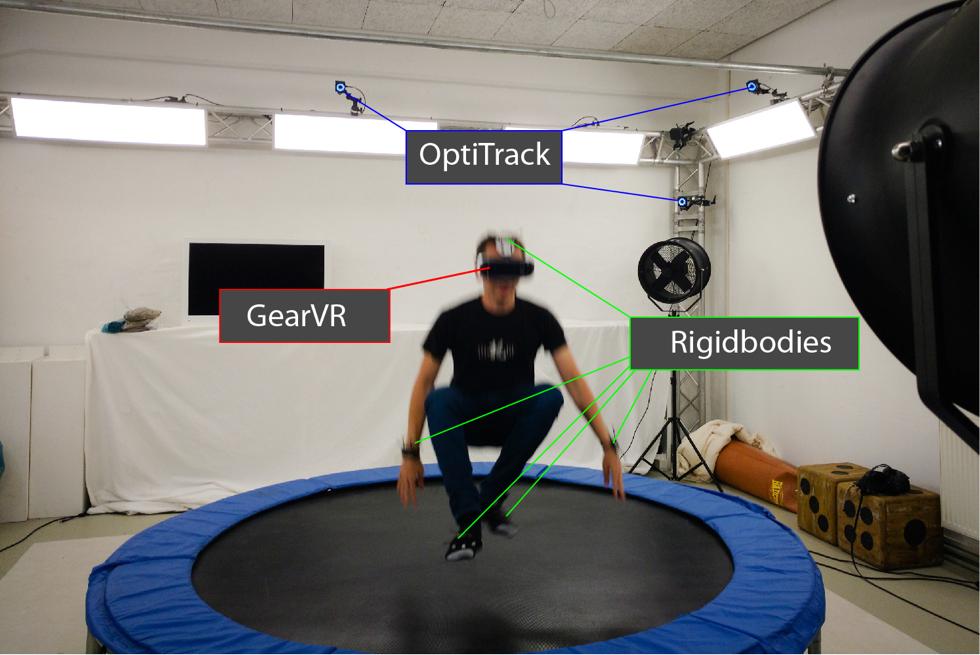
Using a trampoline as a natural 3D user interface with a head-mounted display for virtual reality entertainment is a novel and challenging task. High latencies between interaction and feedback or inaccurate tracking of the user’s movement can lead to simulator sickness. In the scope of this project we identified the most appropriate solutions for the described challenge by testing multiple tracking and virtual reality technologies. A fast and precise network-based system was developed using OptiTrack as a tracking solution and Samsung GearVR as a Head-Mounted Display. The introduced system offers an interface to control an application with a trampoline by providing methods to request e.g. the average jump duration or the user’s current jump height. In addition, it handles interactions or changes the virtual jump height mapping. Two prototypes were developed, exemplary implementing the interface in gaming experiences. The first application was built to test possible simulator sickness with the Simulator Sickness Questionnaire conducted by 38 users during an in-house exhibition. This evaluation revealed that our system enables a safe and fascinating jumping experience without specific simulator sickness. The second application was built after the initial test to create a more entertaining Trampoline VR application.